World Roundup
March/April 2019
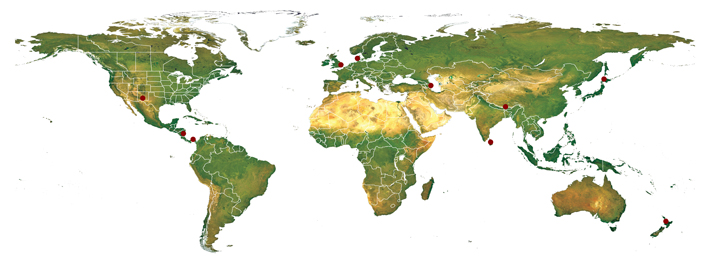

-
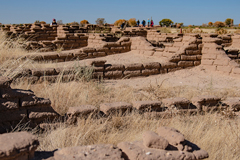 NEW MEXICO: Between 1540 and 1542, Spanish conquistador Francisco Vasquez de Coronado explored northern Mexico and the American Southwest. Although it had been theorized that he passed through the area of today’s Coronado Historic Site near Albuquerque, no tangible evidence of his presence had ever been uncovered. A recent large-scale metal-detecting survey has recovered Spanish nails, crossbow bolt heads, lead shot, chain mail, and other European-made equipment. These artifacts definitively link the Spaniard’s expedition to the site, where he likely clashed with the local Kuaua Pueblo people.
NEW MEXICO: Between 1540 and 1542, Spanish conquistador Francisco Vasquez de Coronado explored northern Mexico and the American Southwest. Although it had been theorized that he passed through the area of today’s Coronado Historic Site near Albuquerque, no tangible evidence of his presence had ever been uncovered. A recent large-scale metal-detecting survey has recovered Spanish nails, crossbow bolt heads, lead shot, chain mail, and other European-made equipment. These artifacts definitively link the Spaniard’s expedition to the site, where he likely clashed with the local Kuaua Pueblo people. -
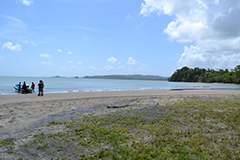 NICARAGUA: Radiocarbon dating confirms that human remains from the Angi shell midden site near the village of Monkey Point are the oldest ever found along Central America’s Caribbean coast. A 6,000-year-old grave contained an adult woman who was about 4 feet 9 inches tall and between the ages of 25 and 40. She seems to have been quite muscular, with well-developed forearms, acquired perhaps through frequent rowing. Her cause of death was not immediately apparent, although there are no signs of trauma.
NICARAGUA: Radiocarbon dating confirms that human remains from the Angi shell midden site near the village of Monkey Point are the oldest ever found along Central America’s Caribbean coast. A 6,000-year-old grave contained an adult woman who was about 4 feet 9 inches tall and between the ages of 25 and 40. She seems to have been quite muscular, with well-developed forearms, acquired perhaps through frequent rowing. Her cause of death was not immediately apparent, although there are no signs of trauma. -
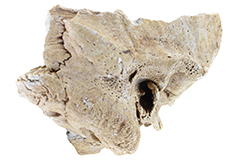 PANAMA: Pre-Columbian societies prioritized shellfish not only as an important food resource but also because the shells were manufactured into decorative ornaments. While small shells could be obtained by beachcombing, larger, intact examples required deep-sea diving. However, this came at a price. Analysis of dozens of precontact skulls from coastal sites revealed that specialized divers who were frequently submerged in the cold waters of the Gulf of Panama grew bone spurs in their ear canals, a painful affliction known today as “surfer’s ear.”
PANAMA: Pre-Columbian societies prioritized shellfish not only as an important food resource but also because the shells were manufactured into decorative ornaments. While small shells could be obtained by beachcombing, larger, intact examples required deep-sea diving. However, this came at a price. Analysis of dozens of precontact skulls from coastal sites revealed that specialized divers who were frequently submerged in the cold waters of the Gulf of Panama grew bone spurs in their ear canals, a painful affliction known today as “surfer’s ear.” -
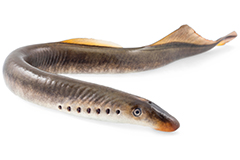 ENGLAND: With its funnel-like mouth and circular rows of sharp teeth, the lamprey fish is one of the most gruesome-looking organisms on the planet. This did not, however, deter wealthy medieval Brits from enjoying the creatures as a trendy culinary delicacy. Rare evidence of this phenomenon was found during excavations near London Underground’s Mansion House station, where deposits in a 13th- or 14th-century cesspit contained lamprey teeth. Since lampreys have no jaws and their teeth are made of keratin, their remains almost never survive.
ENGLAND: With its funnel-like mouth and circular rows of sharp teeth, the lamprey fish is one of the most gruesome-looking organisms on the planet. This did not, however, deter wealthy medieval Brits from enjoying the creatures as a trendy culinary delicacy. Rare evidence of this phenomenon was found during excavations near London Underground’s Mansion House station, where deposits in a 13th- or 14th-century cesspit contained lamprey teeth. Since lampreys have no jaws and their teeth are made of keratin, their remains almost never survive. -
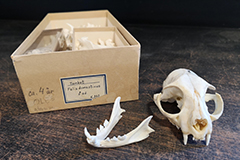 DENMARK: Domestic cats were introduced into Denmark during the first few centuries A.D. For the past 2,000 years, they have been used by humans in various ways: as a source of fur, as pest control, and as family pets. A new study has shown that during this span of time, especially from the Viking Age until now, cats have increased dramatically in size. This is contrary to tendencies observed in other mammal species, such as sheep, cattle, and dogs, which have historically grown smaller after domestication.
DENMARK: Domestic cats were introduced into Denmark during the first few centuries A.D. For the past 2,000 years, they have been used by humans in various ways: as a source of fur, as pest control, and as family pets. A new study has shown that during this span of time, especially from the Viking Age until now, cats have increased dramatically in size. This is contrary to tendencies observed in other mammal species, such as sheep, cattle, and dogs, which have historically grown smaller after domestication. -
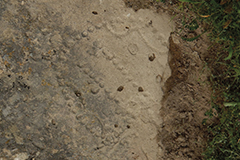 AZERBAIJAN: Ancient herders apparently found a way to entertain themselves during their downtime. A series of holes cut into the floor of a rock shelter in Gobustan National Park represents one of the world’s oldest gaming boards, dating to around 4,000 years ago. The game, sometimes referred to as “58 Holes,” was popular throughout Egypt and the Middle East during the Bronze Age. Although the exact rules are unknown, 2 players likely rolled dice and moved gaming pieces along horizontal rows of dots until someone reached the top.
AZERBAIJAN: Ancient herders apparently found a way to entertain themselves during their downtime. A series of holes cut into the floor of a rock shelter in Gobustan National Park represents one of the world’s oldest gaming boards, dating to around 4,000 years ago. The game, sometimes referred to as “58 Holes,” was popular throughout Egypt and the Middle East during the Bronze Age. Although the exact rules are unknown, 2 players likely rolled dice and moved gaming pieces along horizontal rows of dots until someone reached the top. -
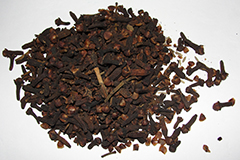 SRI LANKA: Given its central location between the Middle East and Southeast Asia, the port of Mantai developed into one of the most important hubs along Indian Ocean trade routes during the 1st millennium. It is even thought that Roman merchants were visiting the city by A.D. 200. Archaeobotanical remains have highlighted just how globally connected the site was. Cloves imported from Indonesia—more than 4,000 miles away— have been identified, as well as wheat grains and grape seeds that likely originally came from the Mediterranean region.
SRI LANKA: Given its central location between the Middle East and Southeast Asia, the port of Mantai developed into one of the most important hubs along Indian Ocean trade routes during the 1st millennium. It is even thought that Roman merchants were visiting the city by A.D. 200. Archaeobotanical remains have highlighted just how globally connected the site was. Cloves imported from Indonesia—more than 4,000 miles away— have been identified, as well as wheat grains and grape seeds that likely originally came from the Mediterranean region. -
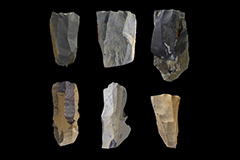 TIBET: Due to its perennially freezing temperatures and low-oxygen conditions, human habitation of the Tibetan Plateau is exceedingly challenging. Yet, somehow, humans have lived there for 30,000 to 40,000 years, as evidenced by thousands of fragments of human-made stone tools and blades from the site of Nwya Devu. Located 15,000 feet above sea level, Nwya Devu is the highest Paleolithic site ever identified, and proves that humans were living along the “roof of the world” almost 20,000 years earlier than expected.
TIBET: Due to its perennially freezing temperatures and low-oxygen conditions, human habitation of the Tibetan Plateau is exceedingly challenging. Yet, somehow, humans have lived there for 30,000 to 40,000 years, as evidenced by thousands of fragments of human-made stone tools and blades from the site of Nwya Devu. Located 15,000 feet above sea level, Nwya Devu is the highest Paleolithic site ever identified, and proves that humans were living along the “roof of the world” almost 20,000 years earlier than expected. -
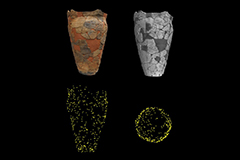 JAPAN: Microscopic impressions left by maize weevils on ancient pottery have shown that the destructive pests have been plaguing Japanese societies for thousands of years. But X-ray and CT scanning of one ceramic vessel from a late Jomon period (ca. 2500–1300 B.C.) site on Hokkaido detected as many as 500 weevils incorporated into the fabric of the clay itself. The beetles may have been purposely included in the pot’s design and manufacture in order to secure a good harvest.
JAPAN: Microscopic impressions left by maize weevils on ancient pottery have shown that the destructive pests have been plaguing Japanese societies for thousands of years. But X-ray and CT scanning of one ceramic vessel from a late Jomon period (ca. 2500–1300 B.C.) site on Hokkaido detected as many as 500 weevils incorporated into the fabric of the clay itself. The beetles may have been purposely included in the pot’s design and manufacture in order to secure a good harvest. -
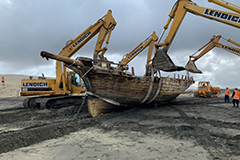 NEW ZEALAND: It took several days and heavy equipment, but the well-preserved wreck of a 55-foot colonial schooner called Daring was finally removed from its resting place along Muriwai Beach west of Auckland. The ship was delivering a cargo of grass seed when it was driven ashore by a severe gale in 1865. It had remained buried there until shifting sands and high tides partially uncovered it last year.
NEW ZEALAND: It took several days and heavy equipment, but the well-preserved wreck of a 55-foot colonial schooner called Daring was finally removed from its resting place along Muriwai Beach west of Auckland. The ship was delivering a cargo of grass seed when it was driven ashore by a severe gale in 1865. It had remained buried there until shifting sands and high tides partially uncovered it last year.
Advertisement
IN THIS ISSUE
From the Trenches
Fairfield's Rebirth in 3-D
Off the Grid
Reburial in Luxor
Mild Boars
Foreign Funeral Rites
The Magic Mineral
Die With Your Boots On
After the Rain
Ice Merchants
The Chicken People
Honoring the Ancestors
Ahead of His Time
Celtic Trophy Heads
A Ride to Valhalla
India's Temple Island
World Roundup
English food culture, Japanese weevils, the Sri Lankan spice trade, and surviving the Tibetan Plateau
Artifact
A lady’s circle of influence
Advertisement

Recent Issues
-
 May/June 2024
May/June 2024
-
 March/April 2024
March/April 2024
-
 January/February 2024
January/February 2024
-
 November/December 2023
November/December 2023
-
 September/October 2023
September/October 2023
-
 July/August 2023
July/August 2023
-
 May/June 2023
May/June 2023
-
 March/April 2023
March/April 2023
-
 January/February 2023
January/February 2023
-
 November/December 2022
November/December 2022
-
 September/October 2022
September/October 2022
-
 July/August 2022
July/August 2022
-
 May/June 2022
May/June 2022
-
 March/April 2022
March/April 2022
-
 January/February 2022
January/February 2022
-
 November/December 2021
November/December 2021
-
 September/October 2021
September/October 2021
-
 July/August 2021
July/August 2021
-
 May/June 2021
May/June 2021
-
 March/April 2021
March/April 2021
-
 January/February 2021
January/February 2021
-
 November/December 2020
November/December 2020
-
 September/October 2020
September/October 2020
-
 July/August 2020
July/August 2020
-
 May/June 2020
May/June 2020
-
 March/April 2020
March/April 2020
-
 January/February 2020
January/February 2020
-
 November/December 2019
November/December 2019
-
 September/October 2019
September/October 2019
-
 July/August 2019
July/August 2019
-
 May/June 2019
May/June 2019
-
 March/April 2019
March/April 2019
-
 January/February 2019
January/February 2019
-
 November/December 2018
November/December 2018
-
 September/October 2018
September/October 2018
-
 July/August 2018
July/August 2018
-
 May/June 2018
May/June 2018
-
 March/April 2018
March/April 2018
-
 January/February 2018
January/February 2018
-
 November/December 2017
November/December 2017
-
 September/October 2017
September/October 2017
-
 July/August 2017
July/August 2017
-
 May/June 2017
May/June 2017
-
 March/April 2017
March/April 2017
-
 January/February 2017
January/February 2017
-
 November/December 2016
November/December 2016
-
 September/October 2016
September/October 2016
-
 July/August 2016
July/August 2016
-
 May/June 2016
May/June 2016
-
 March/April 2016
March/April 2016
-
 January/February 2016
January/February 2016
-
 November/December 2015
November/December 2015
-
 September/October 2015
September/October 2015
-
 July/August 2015
July/August 2015
-
 May/June 2015
May/June 2015
-
 March/April 2015
March/April 2015
-
 January/February 2015
January/February 2015
-
 November/December 2014
November/December 2014
-
 September/October 2014
September/October 2014
-
 July/August 2014
July/August 2014
-
 May/June 2014
May/June 2014
-
 March/April 2014
March/April 2014
-
 January/February 2014
January/February 2014
-
 November/December 2013
November/December 2013
-
 September/October 2013
September/October 2013
-
 July/August 2013
July/August 2013
-
 May/June 2013
May/June 2013
-
 March/April 2013
March/April 2013
-
 January/February 2013
January/February 2013
-
 November/December 2012
November/December 2012
-
 Sep/Oct 2012
Sep/Oct 2012
-
 September/October 2012
September/October 2012
-
 July/August 2012
July/August 2012
-
 May/June 2012
May/June 2012
-
 March/April 2012
March/April 2012
-
 January/February 2012
January/February 2012
-
 November/December 2011
November/December 2011
-
 September/October 2011
September/October 2011
-
 July/August 2011
July/August 2011
-
 May/June 2011
May/June 2011
-
 March/April 2011
March/April 2011
-
 January/February 2011
January/February 2011
Advertisement






